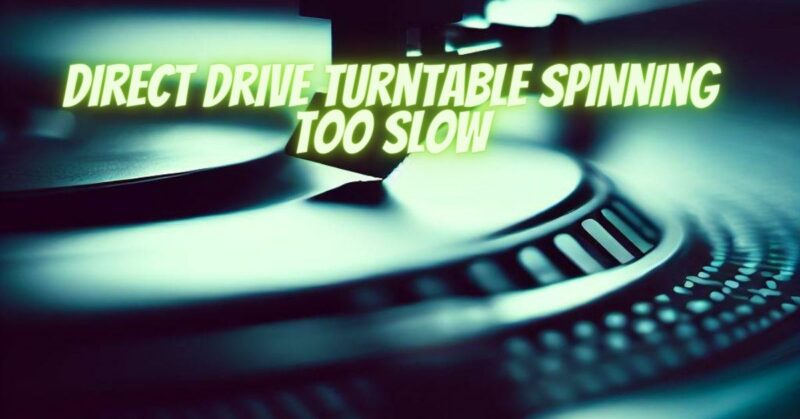Direct drive turntables offer many benefits, including precise speed control and consistent rotation. However, occasionally, you may encounter issues with your direct drive turntable spinning too slowly. In this article, we’ll explore common causes of this problem and provide troubleshooting steps to help you resolve it and restore proper rotation speed.
- Check the Platter: Start by removing the platter and inspecting it for any obstructions or debris that may be causing friction. Clean the platter and the spindle to ensure smooth rotation. Additionally, check for any signs of damage or misalignment that may affect the motor’s connection to the platter.
- Verify the Motor: The motor is a critical component of a direct drive turntable. Ensure that the motor is functioning correctly by checking for any signs of damage or malfunction. If the motor is not operating at its full capacity, it may cause the turntable to spin too slowly. In such cases, professional repair or motor replacement may be necessary.
- Check the Power Supply: Inadequate power supply can lead to a decrease in rotational speed. Ensure that the turntable is plugged into a stable power source and avoid using power outlets shared by other high-power devices that could cause voltage fluctuations. Consider trying a different power outlet to rule out any potential power-related issues.
- Adjust the Pitch Control: Direct drive turntables often feature a pitch control knob or slider that allows for slight speed adjustments. Ensure that the pitch control is set to the neutral position or calibrated correctly. Gradually adjust the pitch control while monitoring the rotation speed until the desired speed is achieved.
- Check for Belt Slippage (if applicable): Some direct drive turntables incorporate a belt drive system for additional stability. If your turntable has a belt, ensure it is properly installed and not slipping. Over time, belts can become loose or worn, affecting the rotational speed. Refer to your turntable’s manual or consult the manufacturer’s guidelines for instructions on how to properly adjust or replace the belt if needed.
- Seek Professional Assistance: If the above troubleshooting steps do not resolve the issue, it may be necessary to seek professional assistance. A qualified technician can diagnose the specific cause of the slow rotation and provide the necessary repairs or adjustments to restore proper speed.
Conclusion:
A direct drive turntable spinning too slowly can be frustrating, but with proper troubleshooting, you can often identify and resolve the issue. By checking the platter, verifying the motor, ensuring a stable power supply, adjusting the pitch control, and inspecting belt slippage (if applicable), you can address common causes of slow rotation speed. If problems persist, it is advisable to consult a professional technician to accurately diagnose and fix the issue. With a properly functioning direct drive turntable, you can enjoy your vinyl collection with the accurate rotation speed it deserves, ensuring an immersive and high-quality listening experience.


